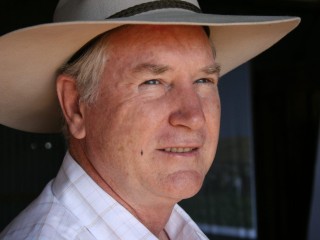 A review of policy releases in the last six months reveals some clarity is now beginning to emerge around the possibility of trading sequestered carbon in the farming sector. This has been a long time coming.
A review of policy releases in the last six months reveals some clarity is now beginning to emerge around the possibility of trading sequestered carbon in the farming sector. This has been a long time coming.
On August 14, 2010, the Prime Minister announced an election promise to establish the Carbon Farming Initiative (CFI).
A discussion paper on it was released in November 2010 which called for submissions and suggestions to improve the Initiative.
The draft legislation was also released on January 4. 2011. Over 280 submissions were submitted by the deadline of 4th Feb 2011, which will now form part of a parliamentary enquiry.
The Government plans to legislate for the Carbon Farming Initiative to commence on July 1, 2011.
The Government also released draft guidelines for the preparation of protocols for measuring agricultural sequestration, in late February 2011. There are currently no approved protocols for measuring and trading soil carbon.
A recent statement from the Minister for Climate Change, Greg Combet (24th Feb 2011), states in part:
“Investment in land sector abatement needs a long-term framework for the full rewards to be delivered and for the climate to benefit. The Carbon Farming Initiative aims to move the land sector forward and seeks to establish a framework for crediting savings both within and outside of international accounting rules.
Much land sector abatement has also been tied up in endless debates about the science and measurement of that abatement. The Carbon Farming Initiative provides a mechanism to resolve the methodological issues for the long term and set up a robust crediting mechanism which engenders public confidence in the environmental outcomes provided.
The ability to sell credits to the domestic voluntary market and internationally also allows the Carbon Farming Initiative to be independent of the debate over a broader carbon pricing mechanism which we are currently having within the Multi-Party Climate Change Committee.
We must not let the debate over the carbon price stop us from making a start on land sector abatement through the Carbon Farming Initiative.” Hon Greg Combet.
So what does this mean in the real world?
The Carbon Farming Initiative (CFI) will allow farmers to sell Carbon Farming Initiative Credits (CFI Credits) on the domestic voluntary market initially, into the Emission Trading Scheme (ETS) when it is established, and onto the international voluntary market and international mandated markets if the standards of measurement and verification are high enough.
There are many good features of the CFI. These include:
• It allows inclusion of:
o Reforestation and revegetation
o Reduced methane emissions from livestock
o Manure management
o Reduced emissions or increased sequestration in agricultural soils (soil carbon)
o Savanna fire management
o Avoided deforestation
o Burning of stubble/crop residue
o Reduced emissions from rice cultivation
o Reduced emissions from landfill waste deposited before 1st July 2011.
• Credits may be Kyoto compliant (Kyoto CFI credits) or non Kyoto compliant (non-Kyoto CFI credits), thus providing flexibility.
• It is an opt-in scheme, which means that participation is not compulsory but is available to organisations with the management skill to sequester and maintain carbon.
There are however still some problems with the detail of the scheme. The major problem areas, which would help exclude most farmers from participating, include:
• The way in which 'Additionality' is proposed to be defined. The Government has chosen to stick with the narrow definition used in the Kyoto protocol, which states that a project cannot be “business as usual” or done for economic reasons. Farmers are constantly changing practices and something which is new today (eg cell grazing) is not new in a few years’ time and is then redefined as “business as usual” and excluded. This is clearly unworkable in agriculture.
• The second major issue is the Permanence period, which is also based on Kyoto rules. The proposal is for a 100 year caveat on the land to maintain any carbon sold. Our experience is that no farmer will sign such a contract.
Therefore unless these major design faults are rectified in the revised legislation, the CFI will be doomed before it starts. Therefore it promises much but may fall well short on actually encouraging farmers to sequester carbon.
We can only hope that the problems in the proposal are properly addressed so that the promise may be delivered.
